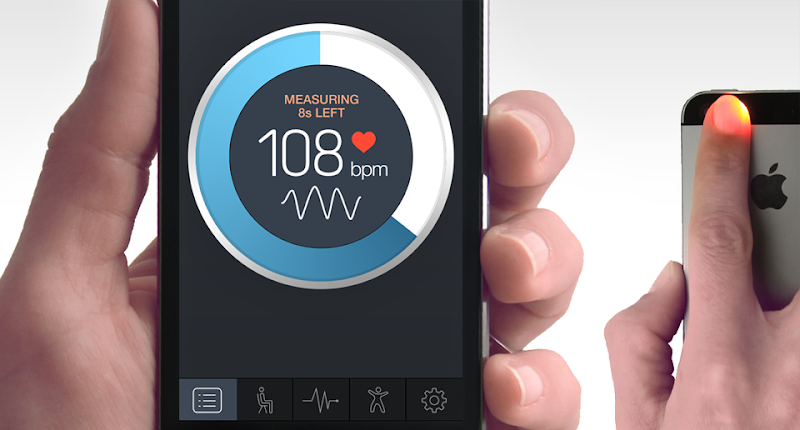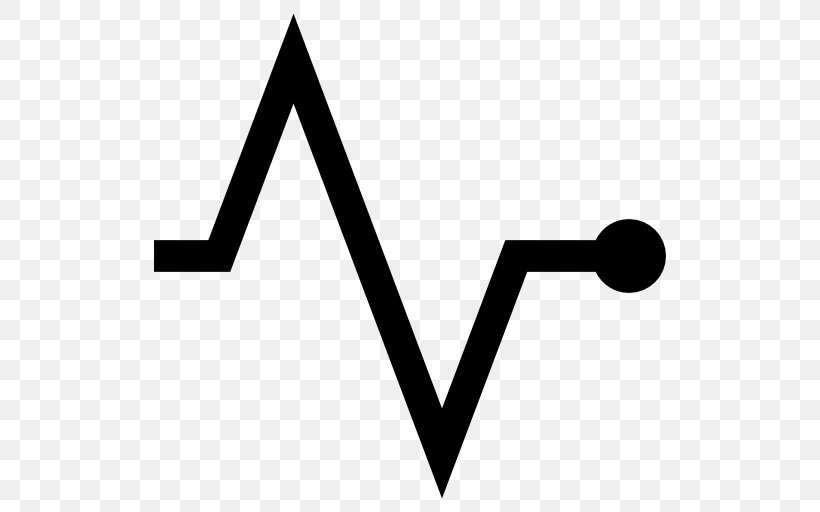- Hummel explains some people experience an extra heartbeat, a skipped beat, too fast of a beat (called tachycardia) or too slow of a beat (called bradycardia). When to see a doctor immediately? Hummel says it can be difficult for most people to know if an irregular heartbeat is a.
- Your pulse is your heart rate, or the number of times your heart beats in one minute. Pulse rates vary from person to person. Your pulse is lower when you are at rest and increases when you exercise (more oxygen-rich blood is needed by the body when you exercise). Knowing how to take your pulse can help you evaluate your exercise program.
A heartbeat tattoo with a small heart on the arms or writs is a fun way to draw plenty of attention. To enhance the appearance of your design, add some distinct features as the symbol of your zodiac sign along with a crisp heartbeat line and you are good to go. Manual Way: Heartbeat can be checked manually by checking one’s pulses at two locations- wrist (the radial pulse) and the neck (carotid pulse).The procedure is to place the two fingers (index and middle finger) on the wrist (or neck below the windpipe) and count the number of pulses for 30 seconds and then multiplying that number by 2 to get the heartbeat rate.
What do you mean by Heartbeat?
A person’s heartbeat is the sound of the valves in his/her’s heart contracting or expanding as they force blood from one region to another. The number of times the heart beats per minute (BPM), is the heartbeat rate and the beat of the heart that can be felt in any artery that lies close to the skin is the pulse.
Two Ways to Measure a Heartbeat
- Manual Way: Heartbeat can be checked manually by checking one’s pulses at two locations- wrist (the radial pulse) and the neck (carotid pulse). The procedure is to place the two fingers (index and middle finger) on the wrist (or neck below the windpipe) and count the number of pulses for 30 seconds and then multiplying that number by 2 to get the heartbeat rate. However, pressure should be applied minimum and also fingers should be moved up and down till the pulse is felt.
- Using a sensor: Heart Beat can be measured based on optical power variation as light is scattered or absorbed during its path through the blood as the heartbeat changes.
Principle of Heartbeat Sensor
The heartbeat sensor is based on the principle of photoplethysmography. It measures the change in volume of blood through any organ of the body which causes a change in the light intensity through that organ (avascular region). In the case of applications where the heart pulse rate is to be monitored, the timing of the pulses is more important. The flow of blood volume is decided by the rate of heart pulses and since light is absorbed by the blood, the signal pulses are equivalent to the heartbeat pulses.
There are two types of photoplethysmography:
Transmission: Light emitted from the light-emitting device is transmitted through any vascular region of the body like earlobe and received by the detector.
Reflection: Light emitted from the light-emitting device is reflected by the regions.
Working of a Heartbeat Sensor
The basic heartbeat sensor consists of a light-emitting diode and a detector like a light detecting resistor or a photodiode. The heartbeat pulses cause a variation in the flow of blood to different regions of the body. When tissue is illuminated with the light source, i.e. light emitted by the led, it either reflects (a finger tissue) or transmits the light (earlobe). Some of the light is absorbed by the blood and the transmitted or the reflected light is received by the light detector. The amount of light absorbed depends on the blood volume in that tissue. The detector output is in the form of the electrical signal and is proportional to the heartbeat rate.
This signal is a DC signal relating to the tissues and the blood volume and the AC component synchronous with the heartbeat and caused by pulsatile changes in arterial blood volume is superimposed on the DC signal. Thus the major requirement is to isolate that AC component as it is of prime importance.
To achieve the task of getting the AC signal, the output from the detector is first filtered using a 2 stage HP-LP circuit and is then converted to digital pulses using a comparator circuit or using simple ADC. The digital pulses are given to a microcontroller for calculating the heartbeat rate, given by the formula-
BPM(Beats per minute) = 60*f

Where f is the pulse frequency
Practical Heartbeat Sensor
Practical heartbeat Sensor examples are Heart Rate Sensor (Product No PC-3147). It consists of an infrared led and an LDR embedded onto a clip-like structure. The clip is attached to the organ (earlobe or the finger) with the detector part on the flesh.
Another example is TCRT1000, having 4 pins-
Pin1: To give the supply voltage to the LED
Pin2 and 3 are grounded. Pin 4 is the output. Pin 1 is also the enable pin and pulling it high turns the LED on and the sensor starts working. It is embedded on a wearable device that can be worn on the wrist and the output can be sent wirelessly (through Bluetooth) to the computer for processing.
Application Developing your Heartbeat Sensor System
A basic Heartbeat Sensor system can also be built using basic components like an LDR, comparator IC LM358, and a Microcontroller as given below
As described above regarding the principle of a heartbeat sensor, when the finger tissue or the earlobe tissue is illuminated using a light source, the light is transmitted after getting modulated i.e. a part getting absorbed by the blood and the rest being transmitted. This modulated light is received by the light detector.
Here a Light Dependent Resistor (LDR) is used as a light detector. It works on the principle that when light falls on the resistor, its resistance changes. As the light intensity increases, the resistance decreases. Thus the voltage drop across the resistor decreases.
Here a comparator is used which compares the output voltage from the LDR to that of the threshold voltage. The threshold voltage is the voltage drop across the LDR when the light with fixed intensity, from the light source, falls directly on it. The inverting terminal of the comparator LM358 is connected to the potential divider arrangement which is set to the threshold voltage and the noninverting terminal is connected to the LDR. When human tissue is illuminated using the light source, the intensity of the light reduces. As this reduced light intensity falls on the LDR, the resistance increases and as a result of the voltage drop increases. When the voltage drop across the LDR or the noninverting input exceeds that of the inverting input, a logic high signal is developed at the output of the comparator and in case voltage drop being lesser a logic low output is developed. Thus the output is a series of pulses. These pulses can be fed to the Microcontroller which accordingly processes the information to get the heartbeat rate and this is displayed on the Display interfaced with the Microcontroller.
Video Explanation on Heart Beat Sensor Circuit Diagram
On This Page
My heart was beating really fast, but I don’t have symptoms now. Should I see a doctor?
If you’ve asked yourself this question, then you’ve probably noticed your heart skipping a beat, fluttering, or just feeling like it’s working too hard inside your chest, neck, or throat.
Everyone has a racing heart from time to time. Stress, exercise, or even too much alcohol or caffeine can cause your heart to beat faster than normal.
But if your heart races a lot—or if you notice your heartbeat is often irregular—then you should see a doctor.
Even though most racing heartbeats are caused by common situations (like stress or fevers), some irregular heartbeats are caused by serious heart conditions like atrial fibrillation. People who have these conditions need monitoring and treatment from a cardiologist (heart doctor).
What Causes a Racing Heart?
Normal hearts beat 60—100 times every minute. When your heart beats more than 100 times each minute, that’s considered high (called tachycardia in the medical world). Fast heartbeats can last for seconds to hours.
Not all cases of a racing heartbeat are dangerous. Many everyday situations that aren’t related to heart problems can cause your heart to race. These can include the following:
- heavy exercise
- stress, fear, anxiety, or panic attacks
- low blood sugar or low blood pressure
- fevers, anemia, and dehydration
- pregnancy or menstruation
- too much alcohol, caffeine, or nicotine
- illegal drugs like ecstasy, methamphetamines, or cocaine
If you notice that your heart is beating faster than normal, look for obvious explanations first:

- Are you stressed out?
- Have you had more caffeine than usual?
- Is your blood sugar low?
You can also try keeping a diary of your symptoms and write down what you were doing before you started to notice your heart was beating fast. Recording when your heart rate goes up can help your doctor better pinpoint what’s causing it.
If you notice that your heart is racing a lot and you’re not exercising or stressed (for example), then you should think strongly about seeing a doctor.
Heart Diseases That Can Cause a Racing Heart
Sometimes a fast or irregular heartbeat can be a sign of a serious heart condition. These conditions include the following:
- a past heart attack
- problems with your heart’s valves or muscles
If your doctor thinks you may have one of these conditions, your doctor may give you an EKG, a chest X-ray, or an echocardiogram (echo test) to diagnose what’s wrong.
Atrial Fibrillation
Atrial fibrillation is one of several heart conditions that can cause an irregular heartbeat. Also known as A-Fib or AF, atrial fibrillation causes your heart’s upper chambers (atria) to beat faster than normal. People with A-Fib have electrical signaling problems in the upper part of their heart.
Atrial Fibrillation & Strokes
Atrial fibrillation is a serious condition that can be life-threatening. As many as six million people in the US may have atrial fibrillation. But one in three people who have A-Fib don’t know they have it.
A-Fib may also increase your chances of having a stroke.

That’s because A-Fib’s irregular heartbeat lets blood pool inside the upper chambers of your heart. This pooled blood can cause blood clots, which can then travel out of your heart and into your brain, which causes a stroke.
If you think you may have A-Fib, it’s important to make an appointment with a cardiologist.
Arrhythmia
Arrhythmias also cause fast or irregular heartbeats, or can make your heart beat too slowly. Arrhythmias happen when the electrical signals inside your heart don’t happen when and how they should.
Beat Pulse App
Atrial fibrillation is one type of arrhythmia.
When to Call a Doctor Right Away
Call your doctor or 911 right away if you have a fast or irregular heartbeat and you also have:
- chest pain
- fainting
- dizziness
- shortness of breath
These symptoms may be signs of a heart attack or stroke.
Next Steps
Many times, fast or irregular heartbeats are caused by normal life situations, like drinking too much caffeine or having anxiety.
But if you notice that your heart is beating quickly a lot, you should consider seeing a cardiologist to make sure you don’t have a dangerous, undiagnosed heart condition.
Make an appointment with a cardiologist.
Low Pulse Beat

Normal Pulse Rate By Age
Hear From Our Specialists
